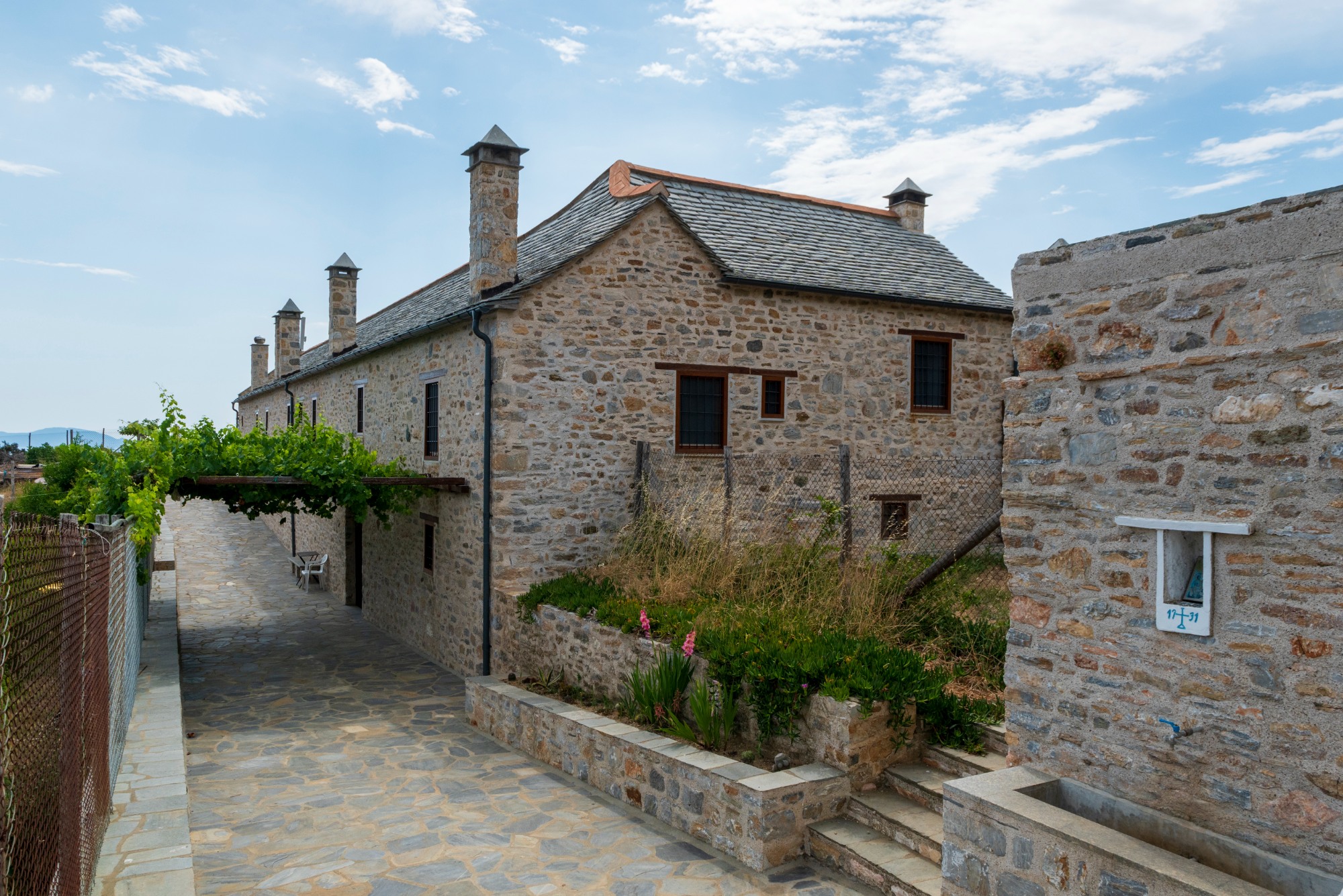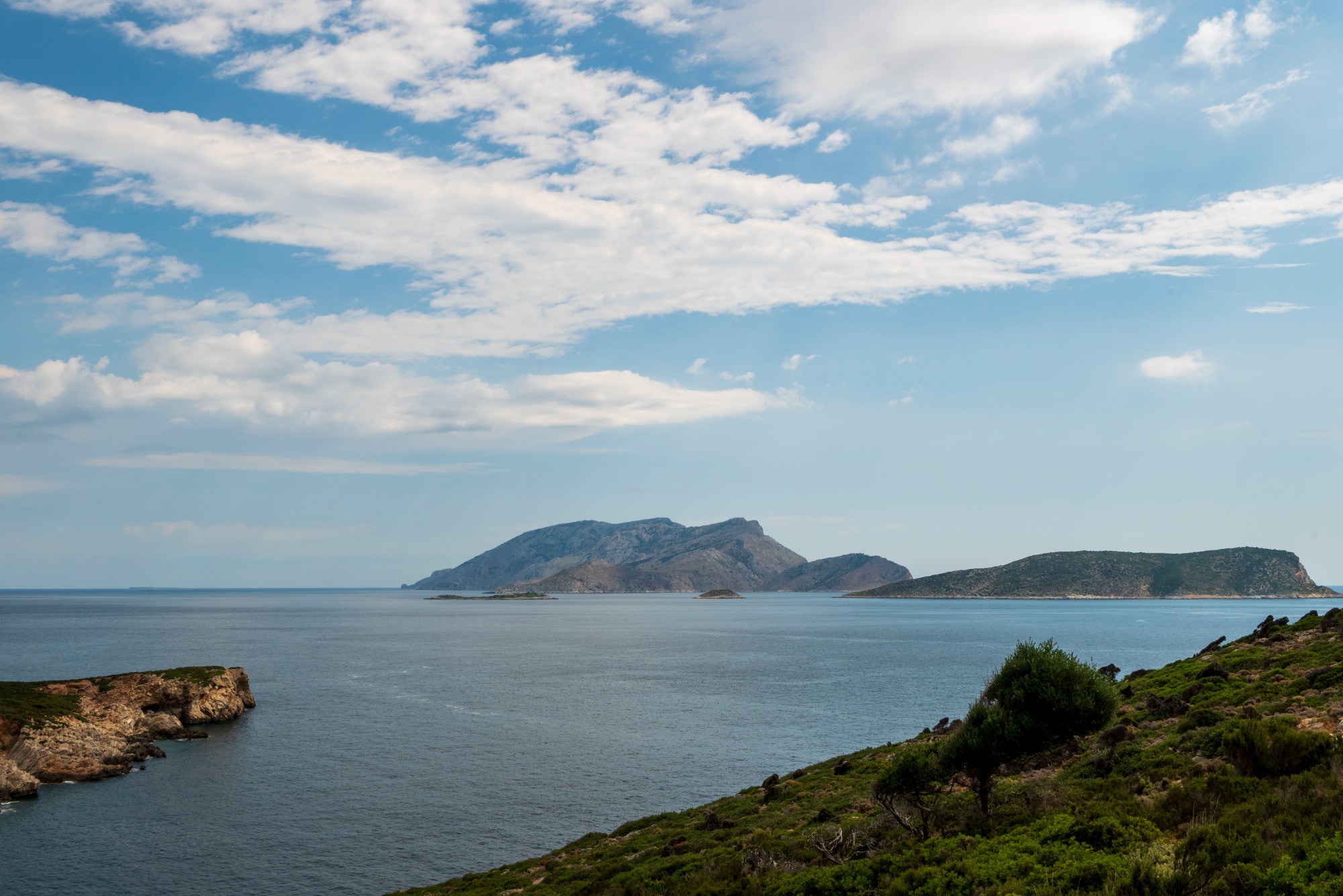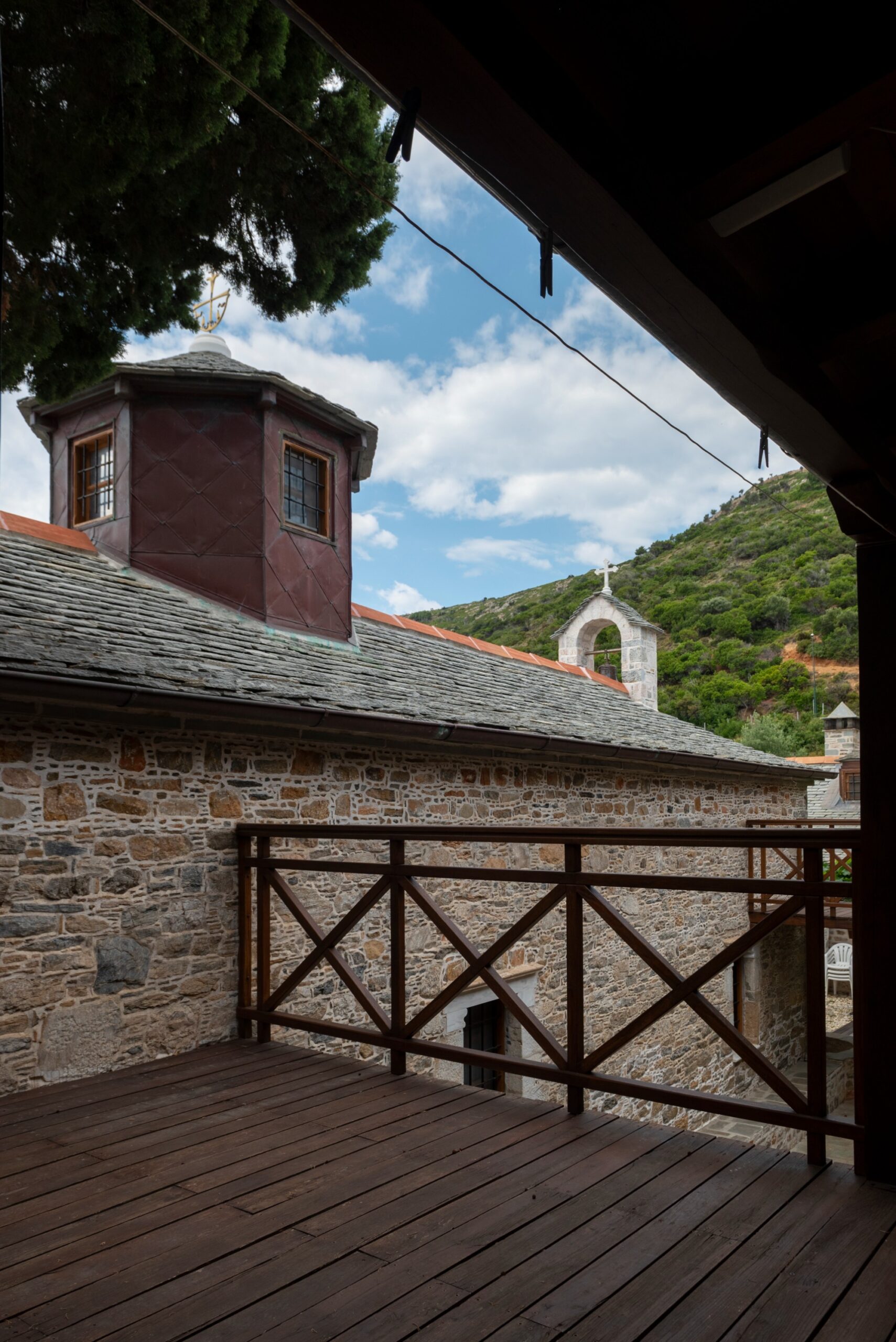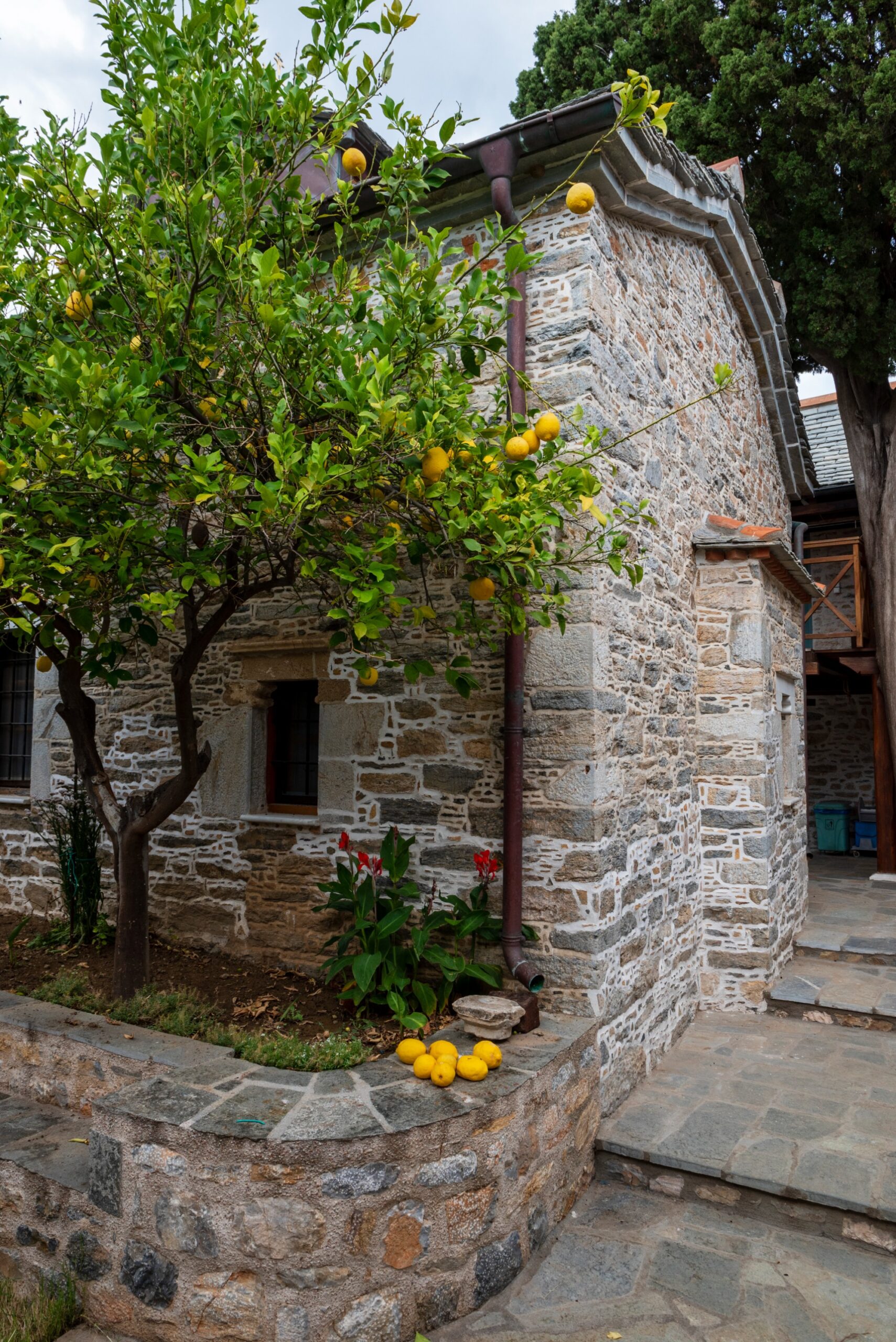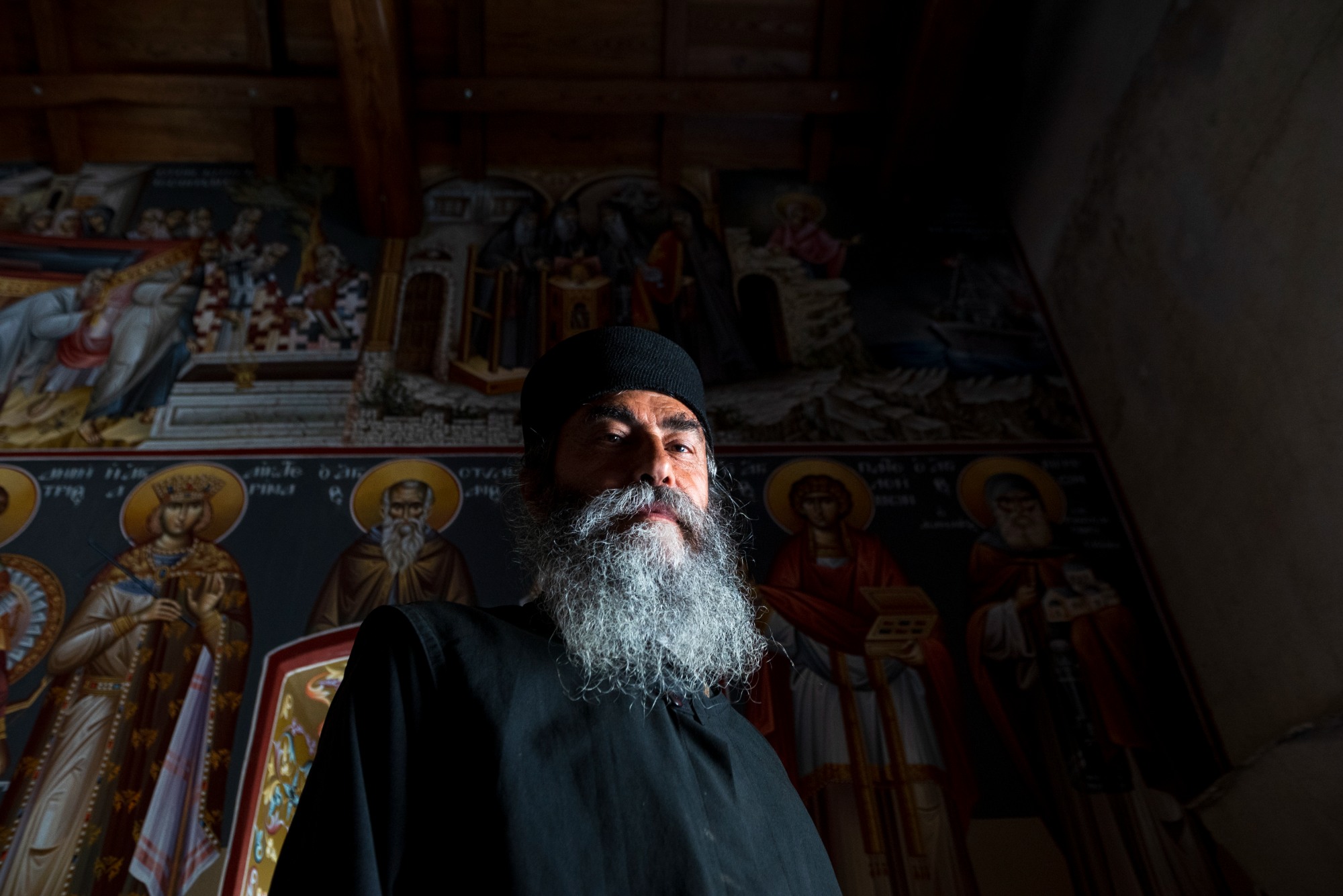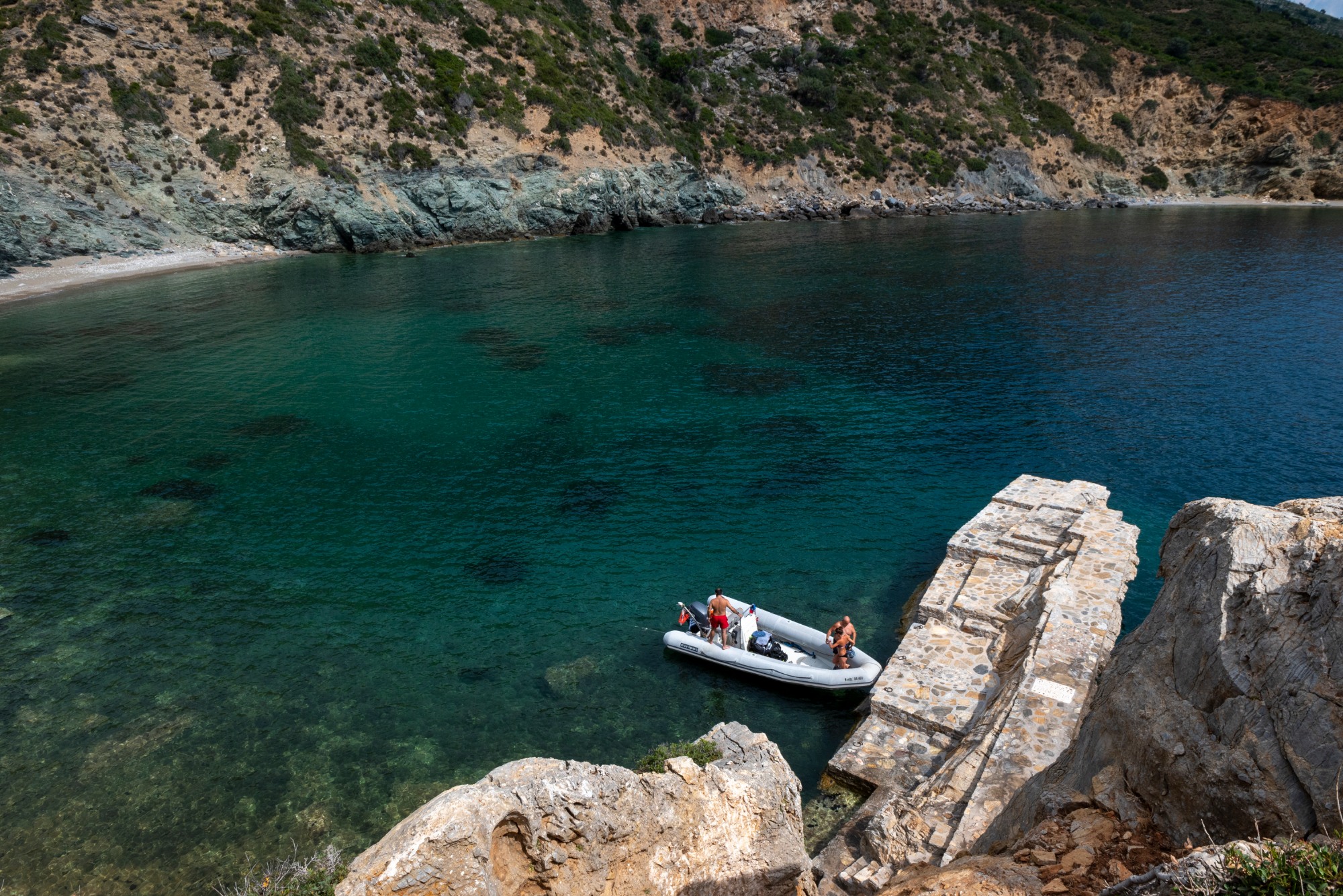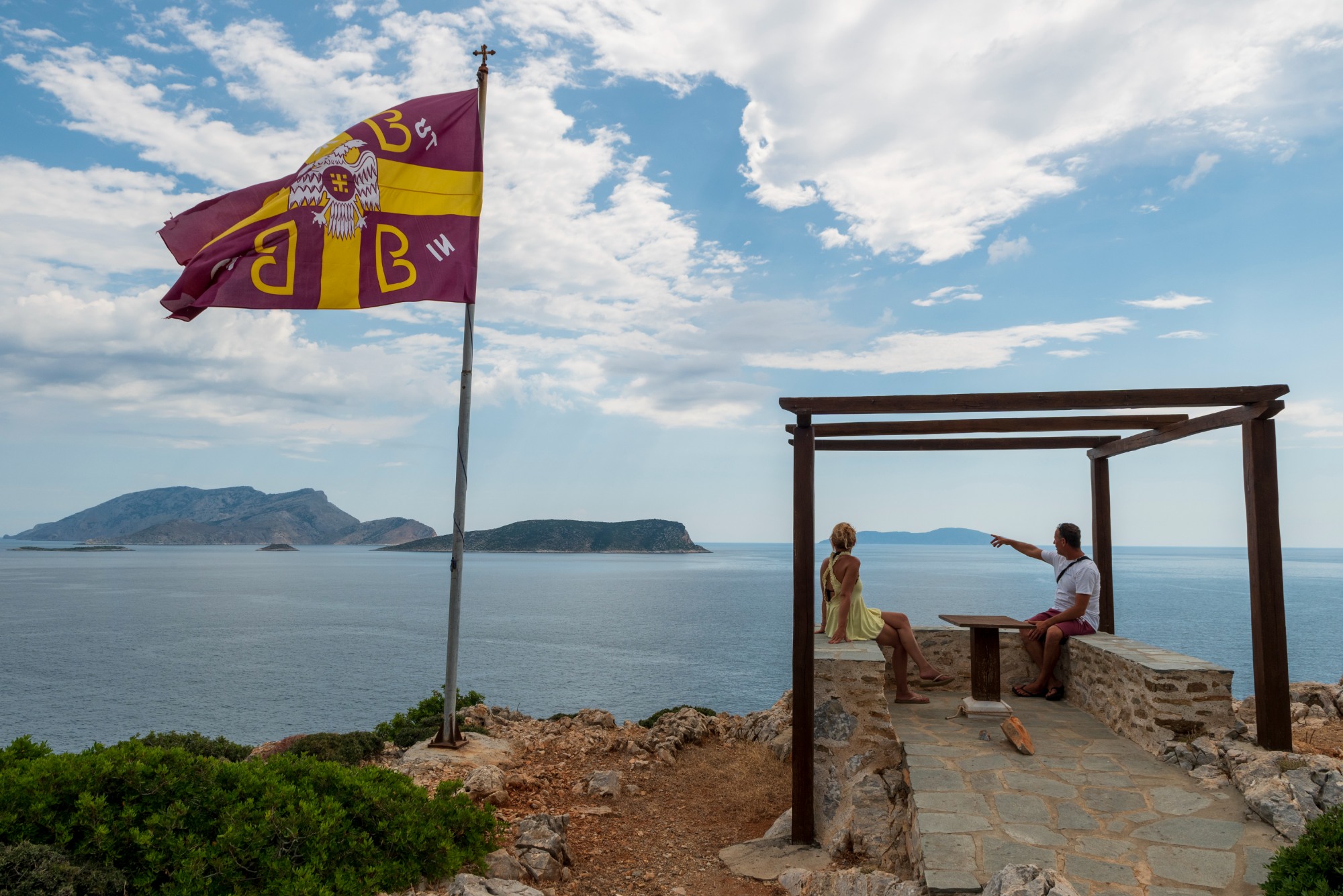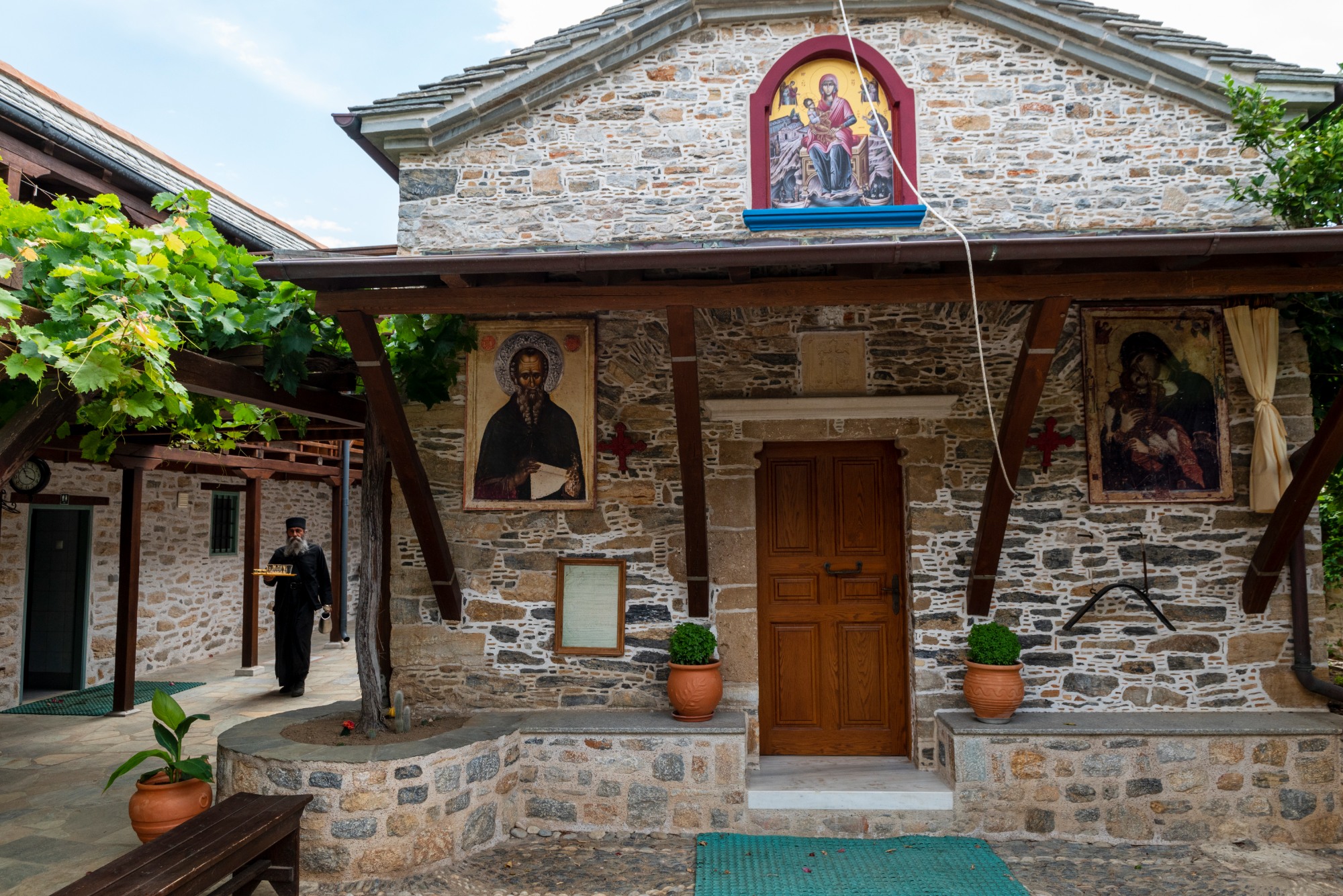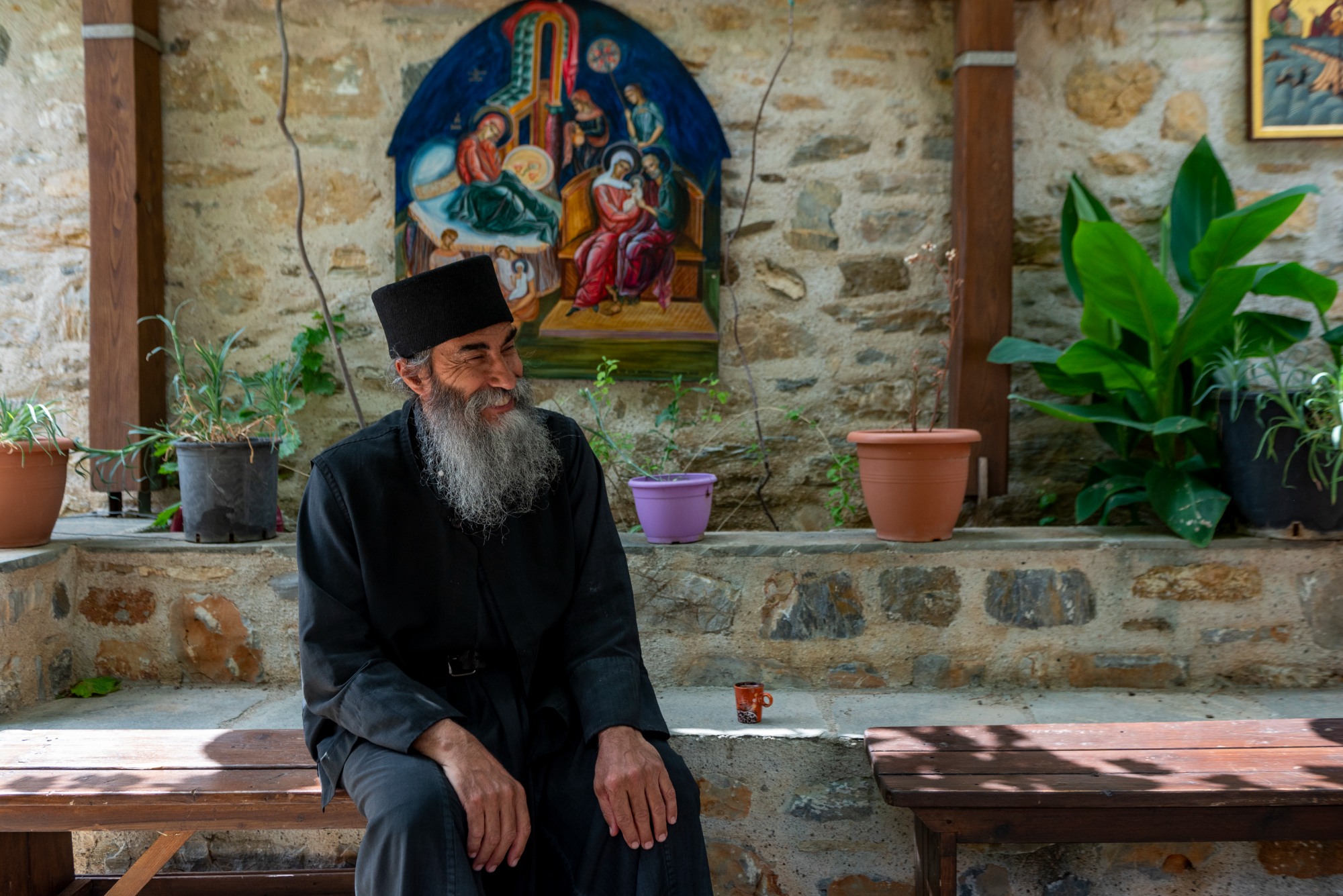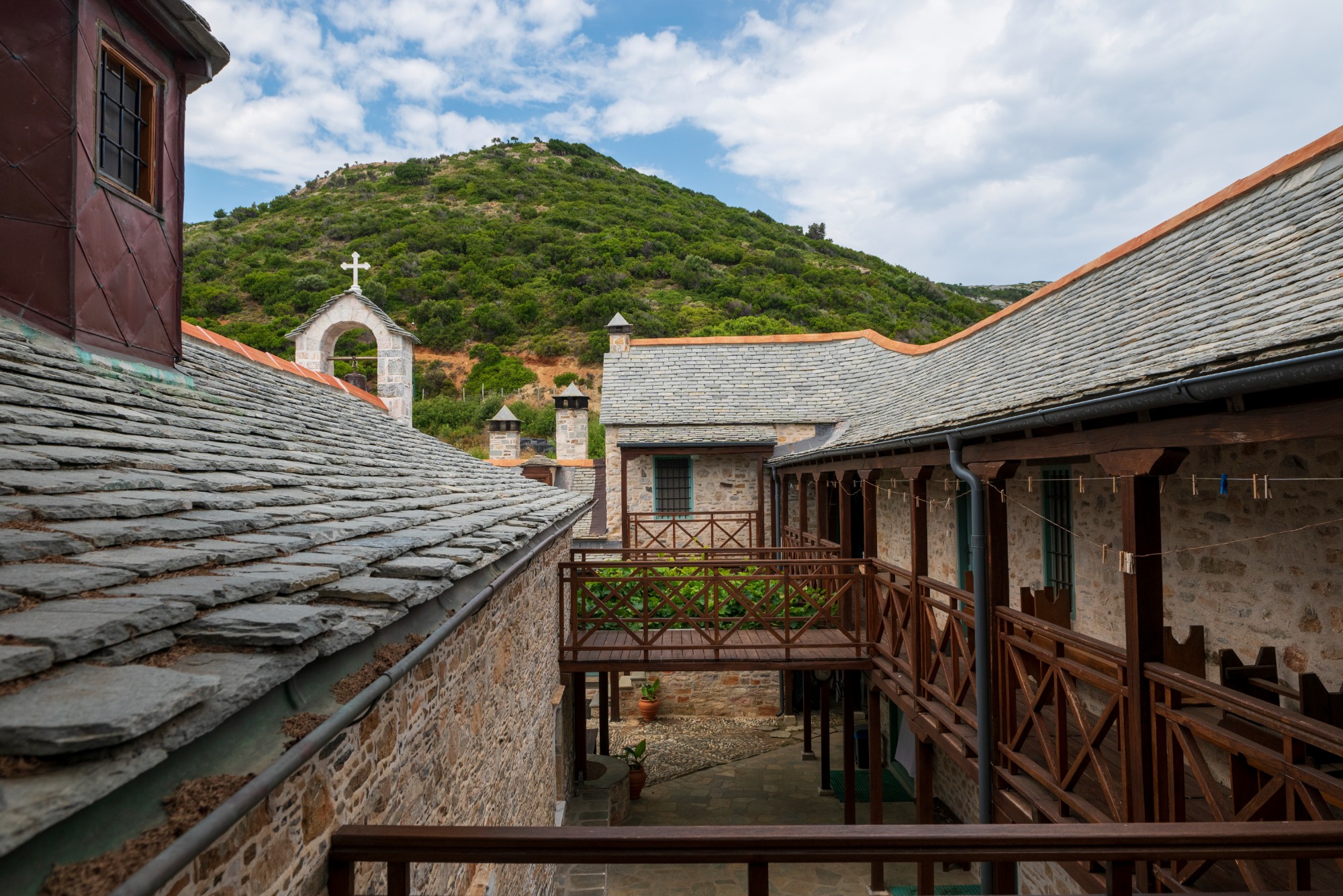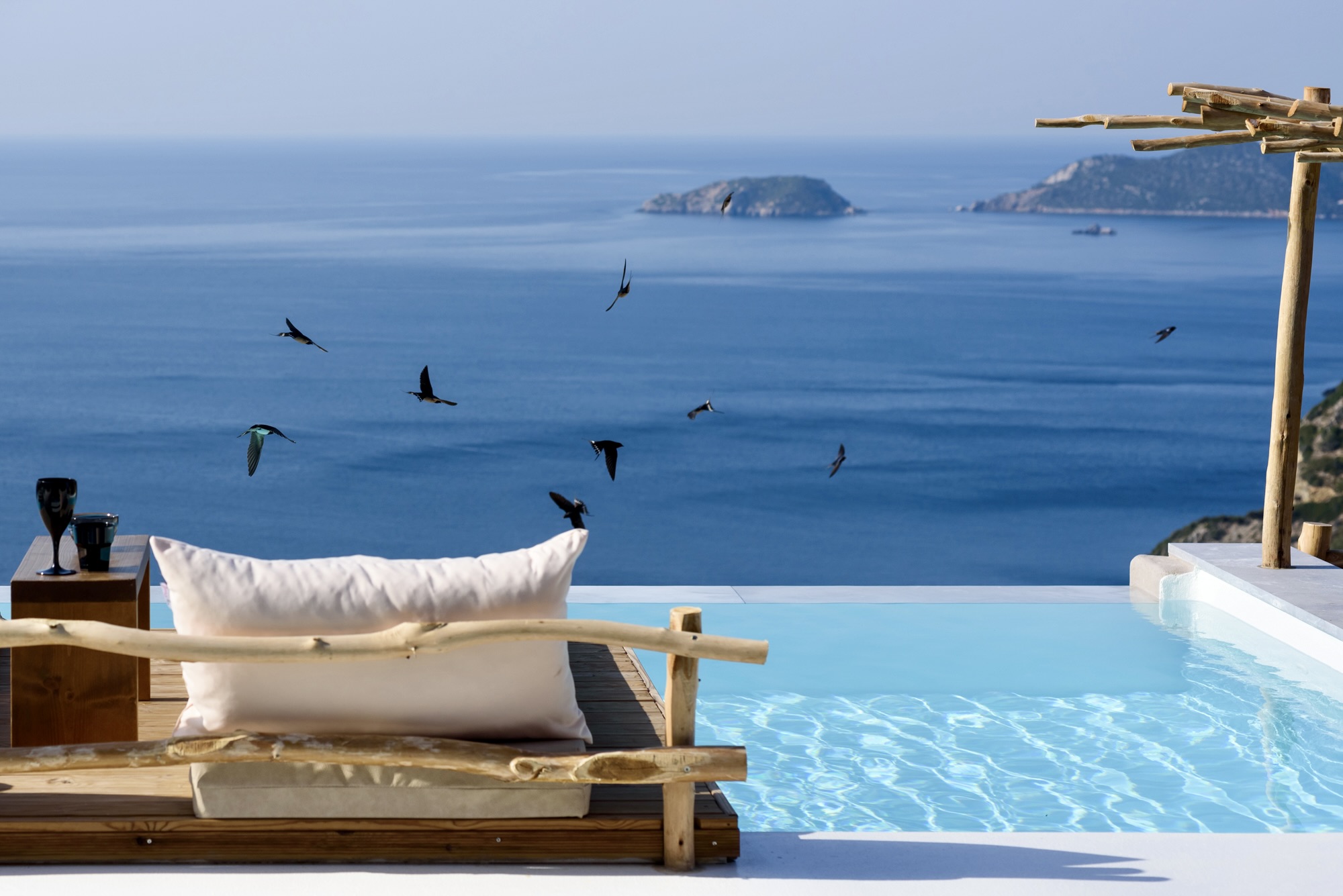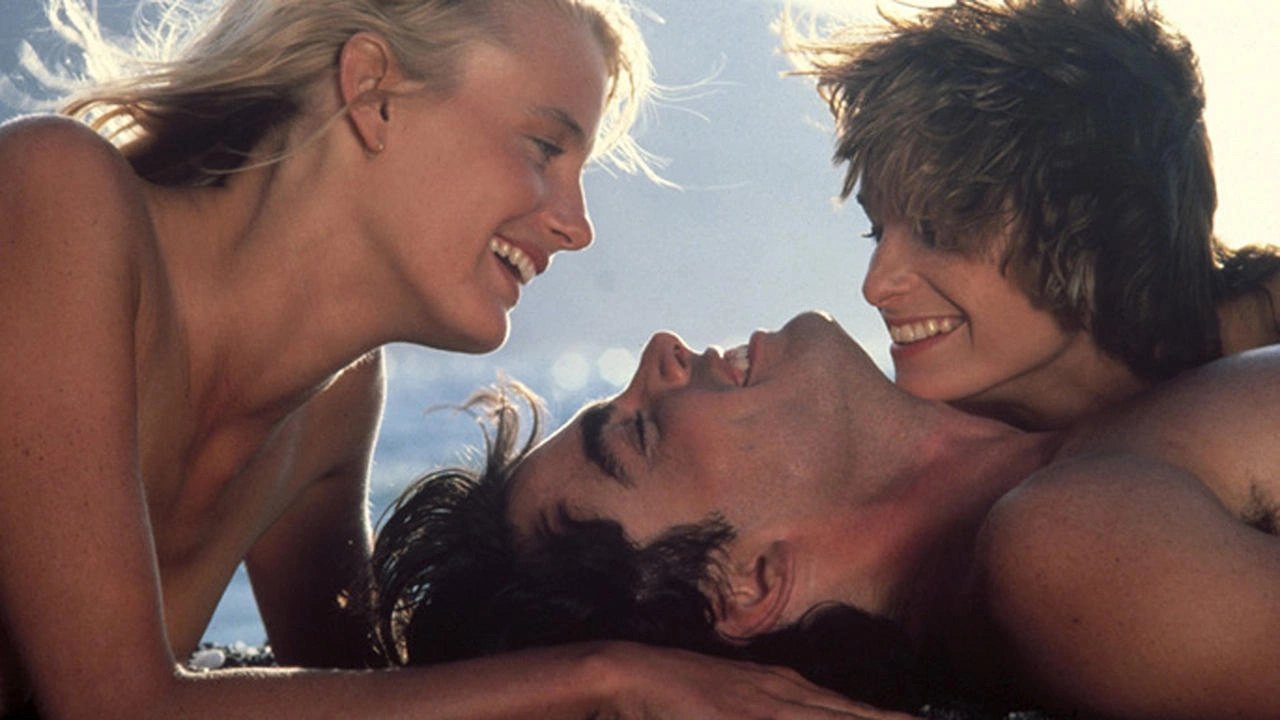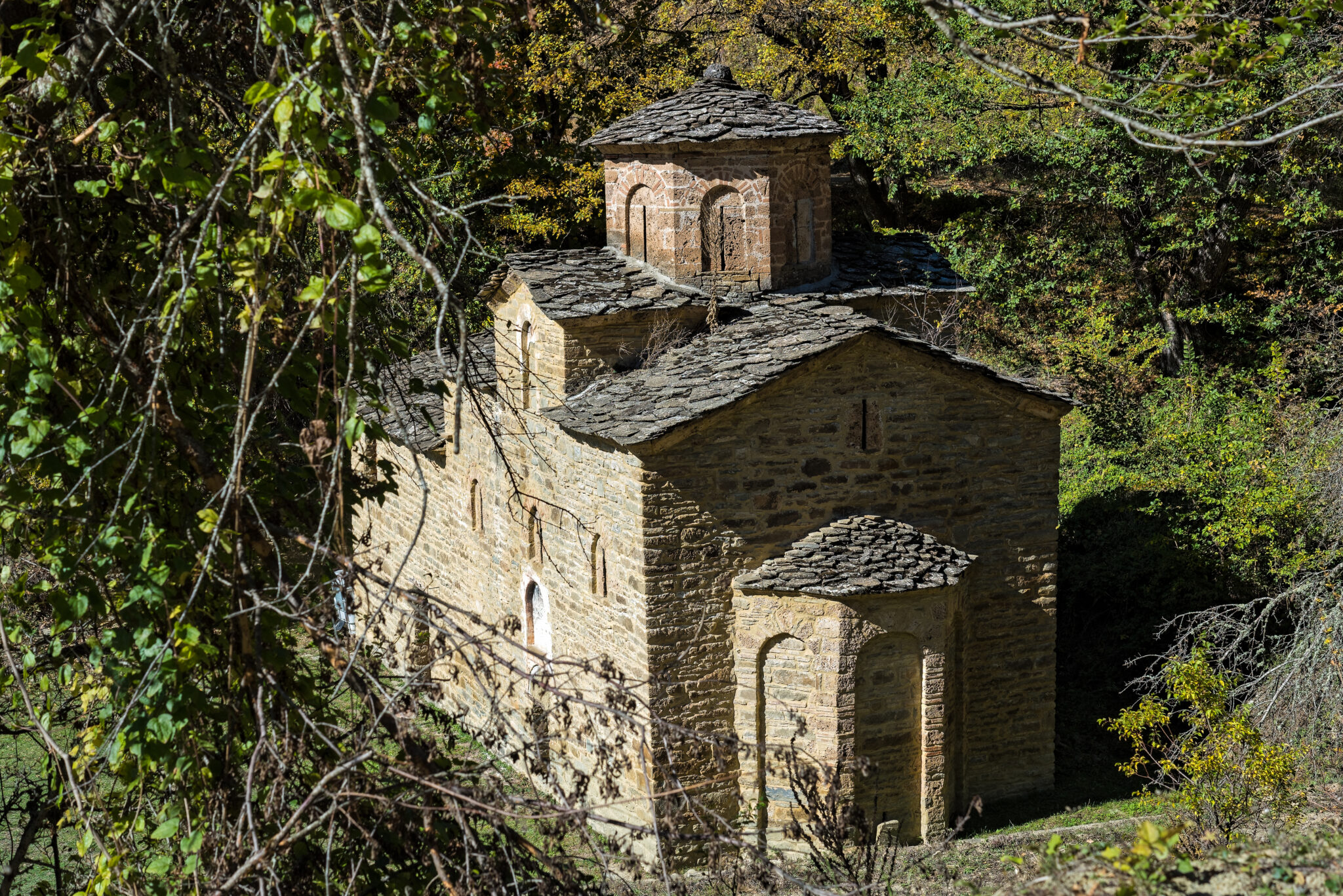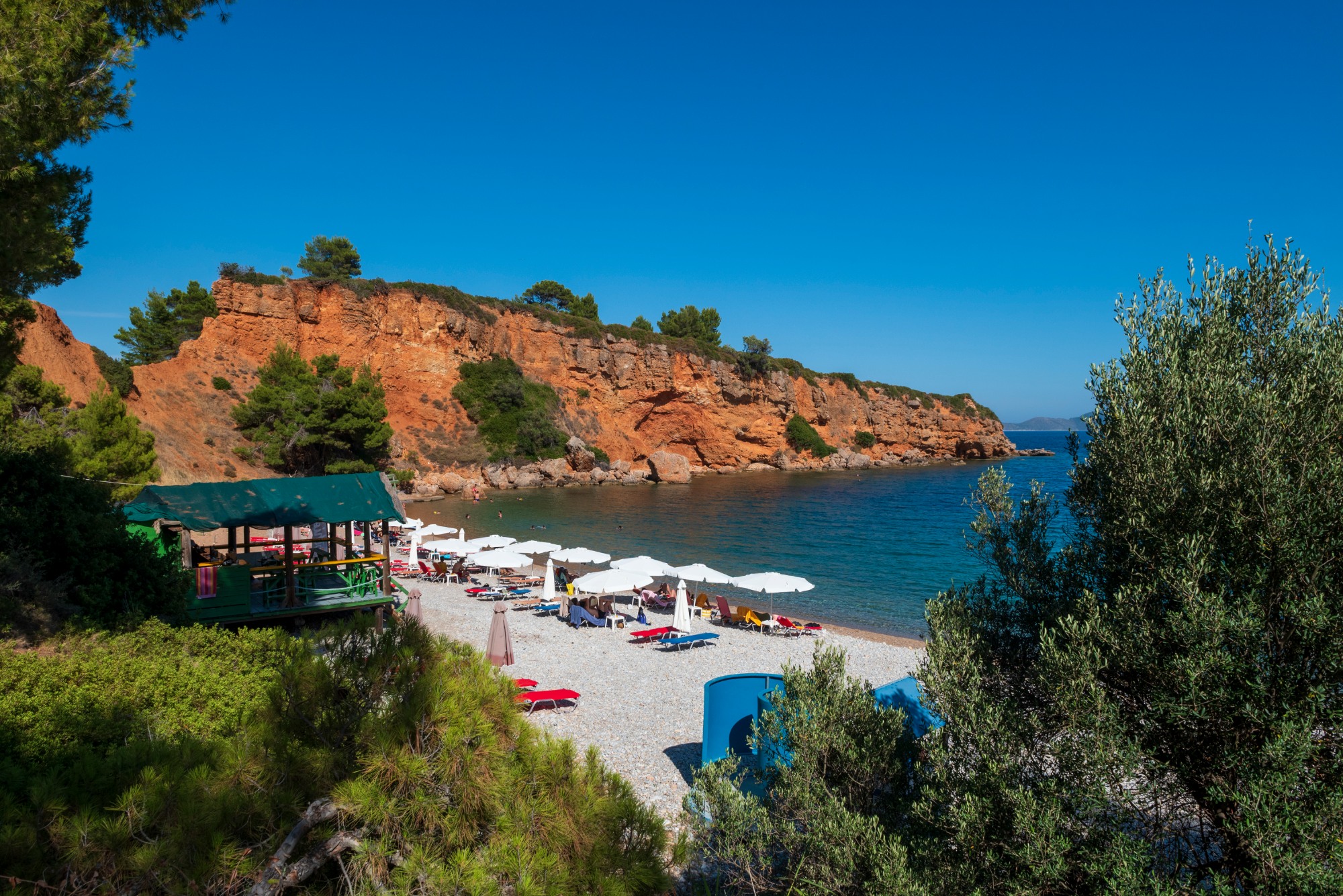Kyra Panagia, the largest (25 square kilometres) of the islands located in the National Marine Park of Alonissos Northern Sporades, owes its name to the Monastery of the Nativity of the Virgin Mary, which stands at its top.
Besides, it is the only reason why access to the island is allowed. Visitors come daily by boat to enjoy a tour of Greece’s first Marine Park, which, apart from being the largest protected marine area in Europe (about 2,220 km2), is also of rare beauty and includes, apart from Alonissos, six smaller islands (Peristera, Kyra Panagia, Psathoura, Piperi, Skatzoura and Gioura) and 22 rocky islets.
Kyra Panagia, a name that has prevailed over time, is located 3.5 miles northeast of Alonissos and the truth is that once the boat docks at the small pier, the first thing you want to do is dive into the crystal clear blue waters. Some people do it and no one can blame them. We, however, preferred to go uphill to the monastery and save swimming for the end. It is definitely better to go uphill, which in some places reaches a gradient of 15%, without the itchy rash that can occur after swimming. After walking for about 20 minutes, we saw the monastery. It seemed different from our last visit 14 years ago. It has been recently renovated, as we learned later. The view, however, was still the same. Amidst the endless blue sky and sea, the view of Psathoura, Gioura and some smaller islands of the marine park contribute to the overall sense of serenity.
Father Haritos, who has been in the monastery since 2012, welcomed us with a treat and some tsipouro (traditional, Greek strong distilled spirit). We sat on the benches of the courtyard, unravelling a tangle of stories lost in the centuries. “The island was bought by Saint Athanasios of Athos, who is the founder of the Monastery of Megisti Lavra on Mount Athos. In 963 AD he built Megisti Lavra, with the assistance of the emperors of Byzantium, Ioannis Tsimiskis and Nikiforos Fokas. Thirty years later, in 993 AD, he bought the island of Kyra Panagia, for 70 golden Byzantine coins, from two monks, Savvas and Kosmas, who were forced to leave the island due to piracy. They had built a monastery in another location on the island, near Agios Petros. Its ruins can still be seen over the bay. This monastery was built on this site in the 17th century”.
Father Haritos, who was calmly recounting the story and whose eyes always light up when he talks about the Virgin Mary, delivered an information torrent: “The grace of the Virgin Mary grants the island unparalleled peace. The monastery is dedicated to her birth. The parents of the Virgin Mary were Saint Anna and Saint Joachim. She is celebrated on September 8, but we tend to do the service on the first Sunday of September, to facilitate all the people who come to worship from all over the Sporades”. While the Divine Liturgy is chanted on Sunday, a lot of people come from Saturday for the service of Vespers. A feast follows. But do not expect any dancing or singing. The table is set and everyone eats in a very quiet environment, while a Father reads the story of the Nativity of the Virgin Mary. We should not forget that the monastery is glebe belonging to the Monastery of Megisti Lavra on Mount Athos.
The quietness of the island is one of its main characteristics and fortunately for us, at the time we visited, it was not very crowded. Walking along the dirt paths with the mastic trees and the kermes oaks, we could only hear the birds, while various wild herbs gave off their scents and aromas. Somewhere in the distance a sailboat was crossing the sea with its sails wide open. Time seemed to stand still. I guess the people who “invented” it are the ones to make it run by their presence. For centuries there were a significant number of monks up here, who tended the olives and cultivated the vines. A remnant of those times is the famous olive stone mill and the wine press that are still observable in the monastery’s courtyard.
Before we bade farewell to this beautiful place, Father Haritos doubly surprised us, with a story and a gesture. “Come to the temple, so that I can show you a special fresco, which refers to recent history. In 1943, the Germans were on their way here to burn the monastery and arrest the monks, as they had information that the monks were helping the English. Their boat caught fire, however, off Psari, an area of Kyra Panagia. After they managed to liaise with Skopelos, they were towed away and never attempted to approach here again”. The painter illustrated the event quite vividly, placing four Fathers inside the church praying to the Virgin Mary, while She, elevated on the top of the island, extends her left hand towards the burning German ship carrying cannons, two German soldiers and the flag with the swastika on the mast.
Then we followed Father Haritos to a room where he filled up some bottles with red wine from the barrel. He bottled them on the spot with a manually operated machine and handed them out to us. “It’s from our vines. We’re still growing some,” he said and bade us farewell.



